-
Are you in Other? If not, please update your location below.
-
Other
- Services
- Class Actions
- No Win No Fee
- Our Firm
- Resources
- Contact Us
Asbestos, a naturally occurring mineral fibre, casts a long shadow over Australia’s history. Once widely used in construction, shipbuilding, and other industries, it has left a tragic legacy. Hundreds of thousands of Australians have been exposed to asbestos fibres, often unknowingly, even after the dangers were apparent.
The consequences are devastating. Asbestos exposure can trigger a range of cancers and lung diseases that may take 10 to 50 years to appear. Sadly, these illnesses often lead to death shortly after diagnosis. In New South Wales alone, an estimated 4,000 Australians die each year from asbestos-related diseases – a number exceeding the national road toll.
If you are someone who has been affected by asbestos exposure, it’s important to understand what asbestosis is and how people get it. According to Health Direct, asbestosis is a chronic, incurable lung condition that is caused by asbestos dust and fibres. These fibres can scar the lungs, making it difficult to breathe.
Here are some of the most common symptoms of asbestosis:
The main reason that people get asbestosis is due to prolonged exposure to asbestos fibres.
The asbestos fibres float into the air and get stuck in the alveoli, which are small sacs that reside inside the lungs. The alveoli are where oxygen is exchanged for carbon dioxide in the blood. Because the sacs are sensitive, the fibres irritate the lung tissue to the point of scarring. When this happens the lungs as a whole become stiff, which, in turn, makes it difficult to breathe.
Asbestosis is only one kind of asbestos-related disease, other common ailments include mesothelioma and pleural plaques.
Mesothelioma is a form of cancer affecting the tissue that lines the body cavities and is extremely deadly because it spreads very quickly after the first symptoms appear. According to The Australia Cancer Council, symptoms of mesothelioma include:
Mesothelioma has a latency period of between 20 to 60 years.
If you can prove that you developed mesothelioma as a result of negligence, there is a chance that you can file a mesothelioma claim.
The other common illness associated with asbestos is called pleural plaques. This is a non-cancerous form of lung disease that alone is considered non-life threatening, but can also take a toll on the body.
Pleural plaques, characterised by patches of fibrous thickening on the pleura (lining of the lungs), are typically caused by asbestos exposure. According to the Asbestos & Mesothelioma Association of Australia, there is no known effective treatment.
While pleural plaques are often asymptomatic, some symptoms include:
Have you or someone you know been exposed to asbestos? You may be wondering if you qualify to make a claim as a result of this asbestos exposure.
Unlike most illnesses, mesothelioma and asbestosis have only one well-defined cause — asbestos exposure. Companies that have failed to warn about the dangers of asbestos have been held liable for exposing workers and the public so many individuals with asbestos-related diseases are qualified to make a compensation claim. This helps victims pay medical costs and provide for their families.
If you’ve lost a loved one to an asbestos-related illness, you can also file a wrongful death lawsuit on their behalf.
Many professions put workers at risk of asbestos exposure, including:
Making a claim may seem like a complex and difficult process, but it doesn’t have to be because the GMP Law legal team is here to assist you with your compensation claim.
Nearly all claims for asbestosis and other dust diseases are settled in less than 18 months, and many take only 3-4 months.
Proving liability in the case of asbestos-related disease is predicated on the understanding that if you were exposed to asbestos, someone besides yourself is to blame. If that person, company or entity still exists, you can bring a common law claim against them. If there is no one to claim against, you can still file a statutory claim for asbestos compensation.
Your legal team will help you determine what the best course of action is when it comes to filing your asbestos claim.
Here are the main possibilities:
Your lawyer will assess the specifics of your situation and recommend the most effective strategy to secure the compensation you deserve.
Compensation amounts for asbestos-related illnesses vary significantly based on individual circumstances. Payouts can range from hundreds of thousands to millions of dollars.
Payout amounts will vary based on:
A recent case we handled resulted in a $1,250,000 payout.
Our client was suffering from mesothelioma and was also the primary caregiver for a disabled adult child. The settlement amount reflects the extent of their hardship and also ensures the continuation of the care of their child.
Here are some other scenarios that illustrate the range in severity which will ultimately affect the compensation amount:
High severity | John A shipyard worker for 20 years, John was diagnosed with mesothelioma at age 55. During his employment, the shipyard notoriously disregarded safety protocols related to asbestos dust exposure. John’s extensive medical bills, lost wages, pain and suffering, and the future needs of his family due to his likely shortened lifespan all contribute to a potentially very high compensation amount. |
High severity | Sarah A homeowner for 30 years, Sarah was diagnosed with mesothelioma. She was an avid DIYer and completed extensive home renovations over the years. Unfortunately, she was unaware that the home’s construction materials contained non-friable asbestos until she began renovations. During the process, the asbestos was disturbed, leading to the release of harmful dust particles. Her illness is severe so her compensation amount will account for this pain and suffering. Since she still resides in her home, the material can also be tested for asbestos and the manufacturer could be identified (such as James Hardie’s low-density board, Villaboard or SuperSix). |
Lower severity | David A construction worker for 5 years in his early 20s, David developed asbestosis. A doctor has confirmed his condition is linked to past asbestos exposure. David can demonstrate his employer ignored safety measures during a renovation project where he inhaled significant dust. While asbestosis is not as severe a condition as mesothelioma, David can still make a claim, however, his compensation may be limited. |
Lower severity | Lisa A teacher for 25 years, Lisa has recently been diagnosed with pleural plaques. The school building is believed to have contained some asbestos-containing materials and Lisa was working in the vicinity of this building while extensive dusty renovations were undertaken. This may be her only possible source of exposure as she has not undertaken home renovations or worked in other industries where it is recognised asbestos exposure occurs. Unfortunately for Lisa, pleural plaques alone do not entitle a person to compensation. If pleural plaques develop into a more serious condition, such as asbestosis which restricts lung function, then she may be eligible to pursue a compensation claim. |
In dust disease claims, negligence is established when there is a link between the claimant’s exposure to harmful substances and their resulting illness.
The hazardous nature of industries involving exposure to substances like silica and asbestos necessitates a strong emphasis on worker compensation. Recognising the inherent dangers these workers face, legal frameworks often focus on compensating workers who have suffered from these occupational diseases.
The typical timeframe for resolving an asbestos compensation claim is between one and two years from initiation to settlement. However, it’s essential to note that this is an average, and the actual duration can vary significantly based on individual circumstances.
In cases where the claimant’s health is rapidly deteriorating, NSW’s Dust Diseases Tribunal offers expedited processes. This often involves obtaining a medical prognosis indicating a limited life expectancy. With this evidence, the Tribunal can prioritise the case, leading to a significantly faster resolution.
The quickest dust disease compensation claim we have processed took just 10 weeks, from opening the file to settlement.
It’s important to consult with an experienced asbestos lawyer to understand the specific timelines and procedures applicable to your case.
The time limit for filing a common law asbestos claim in Australia (known as the statute of limitations) varies depending on the state or territory where you were diagnosed.
NSW:
QLD:
The complexity and variation in time limits across states and territories underscore the importance of consulting with a specialised dust diseases lawyer. They will be able to advise you on the time limits, if they apply, in your state or territory.
To be eligible for compensation under the Dust Diseases Tribunal Act 1989, a person must have or currently be suffering from a dust-related condition.
This includes:
The Tribunal specifically considers conditions affecting the lungs, pleura, or peritoneum resulting from exposure to substances like asbestos, silica, coal dust, or other industrial pollutants.
Yes, you can still file an asbestos claim even if you have a history of smoking. While smoking can worsen the effects of asbestos exposure, it doesn’t automatically disqualify you from seeing compensation.
Yes, in most Australian states and territories, you may be eligible to file a claim on behalf of a deceased loved one who passed away from an asbestos-related disease. It’s important to consult a lawyer to understand the specific eligibility requirements and time limits that apply in your state.
Yes, you can still claim compensation for asbestos exposure even if it didn’t happen at work. Here are some scenarios where you might have a case:
Asbestosis and mesothelioma can take a serious and damaging toll on the affected person, both physically and financially. The last thing you need is the added burden of complex legal matters.
At GMP Law, our compassionate team understands the challenges you face, and we’re here to help you navigate the claims process with confidence.
Our lawyers specialise in asbestos claims and will ensure your case is handled accurately and efficiently.
We will:
At Gerard Malouf & Partners, we work on a no-win, no-fee basis for asbestos exposure victims. You only pay legal fees if we secure compensation in your case.
Are you interested in learning more about filing an asbestos claims case for potential compensation? Read our complete guide to dust disease compensation claims and speak to our asbestos compensation lawyers today.

With seven years of legal experience, Katie Ferrier specialises in Dust Disease and Medical Negligence claims. Katie combines a rigorous analytical approach with deep empathy to achieve optimal outcomes for clients impacted by negligence.
In the spirit of reconciliation GMP Law acknowledges the Traditional Custodians of country throughout Australia and their connections to land, sea, and community. We pay our respects to their Elders past, present, and emerging, and extend that respect to all Aboriginal and Torres Strait Islander peoples today.

Your location is currently:
Please wait while you are redirected to the right page...